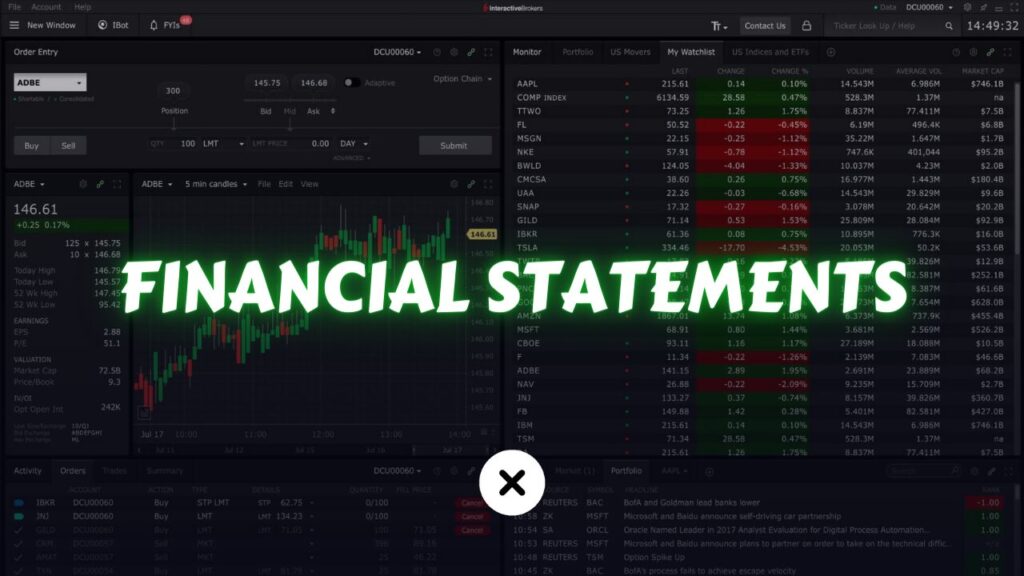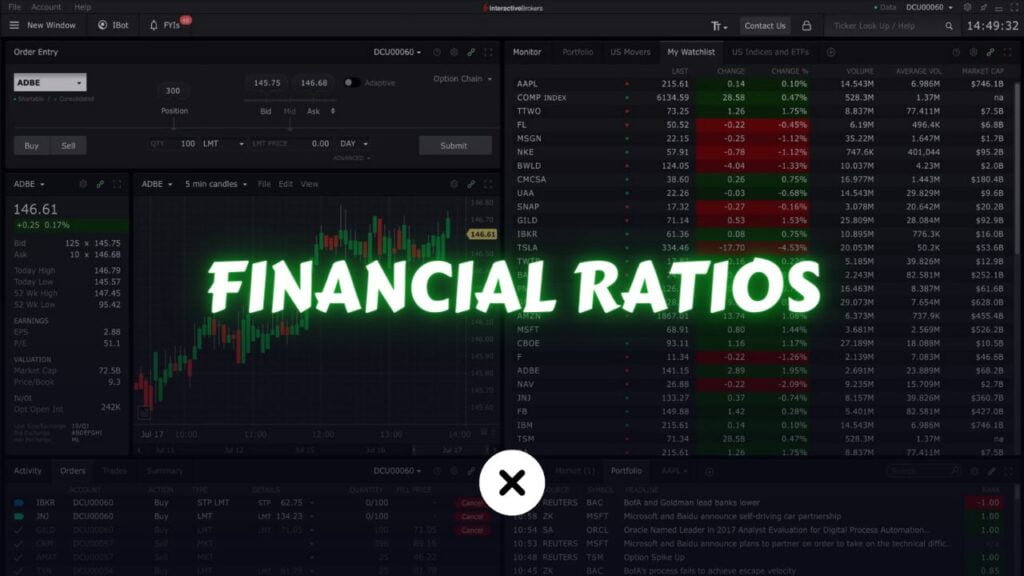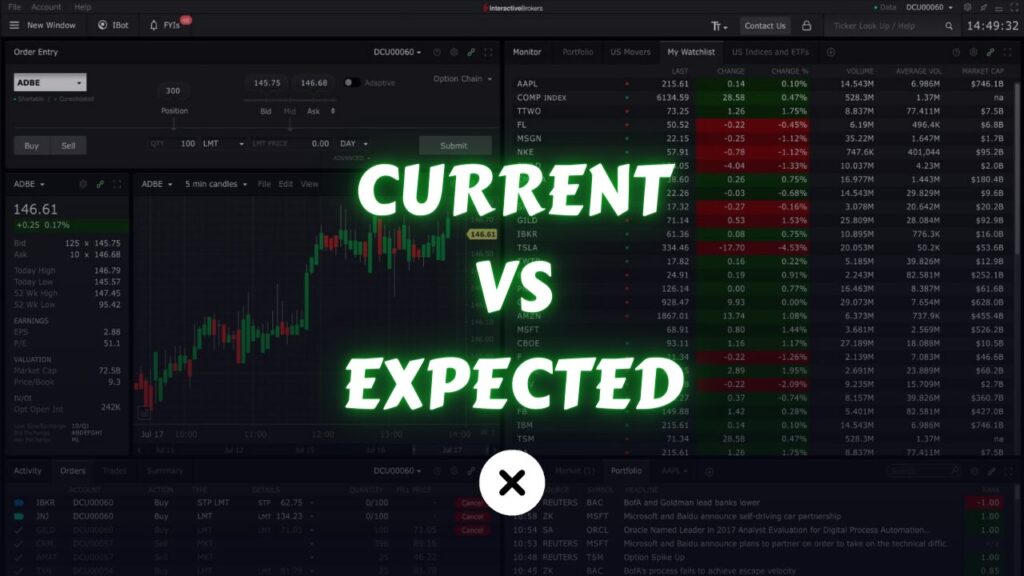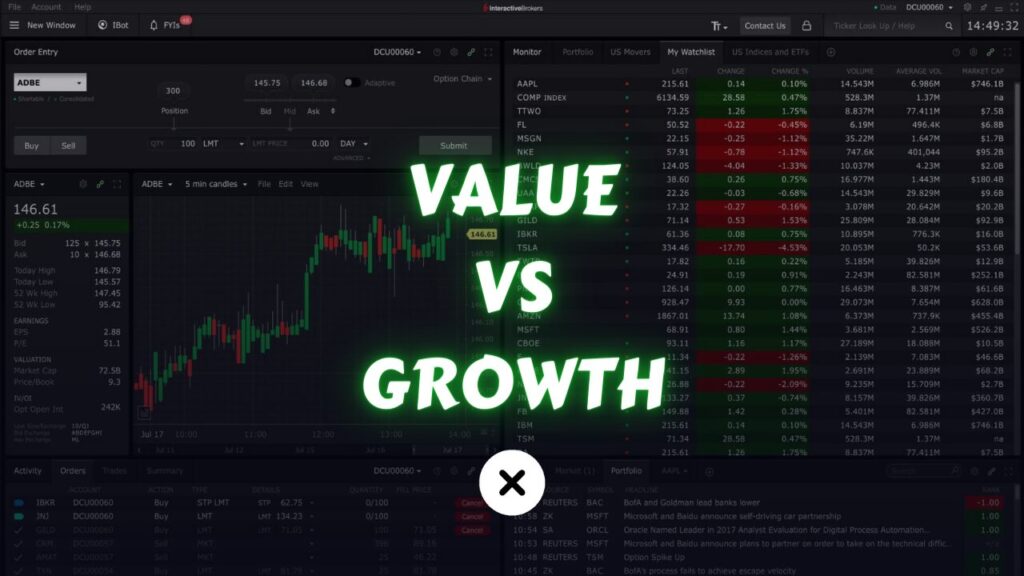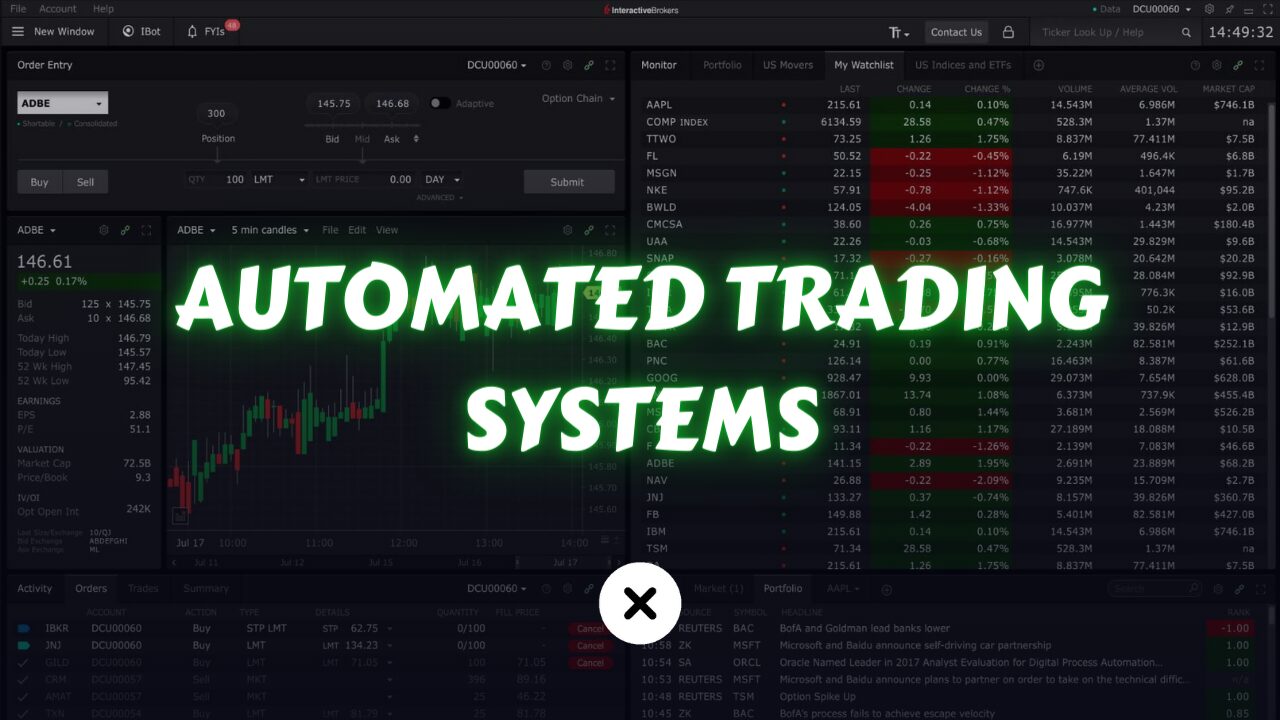
Building an automated trading system can be a highly rewarding venture, both intellectually and financially. Such systems can execute trades on your behalf based on predefined criteria, eliminating human error, and enabling trading strategies to be tested and implemented more effectively. In this article, we are going to talk about how to build automated trading system and how to deploy it effectively.
What is Algorithmic Trading?
Algorithmic trading, often referred to as algo trading, is the use of computer algorithms to automate the process of buying and selling financial assets in the markets. These algorithms are programmed to execute trades based on predefined rules and criteria, without requiring manual intervention.
Just like we talked before basically, it’s gonna be a computer that trades for us.
Creating a trading bot can be tough. But if we break down the steps, it becomes simpler to handle and maintain the system over time. Breaking it into sections also helps us build it faster and better.
But before all of that, you need to understand how automated trading works in the real market situation. for that let’s use an example by bloom trading.
How Automated Systems Work?
We’ll see the stock market as a video game, and you’re a player in that game. You’ll have tools, like technical or fundamental tools, just like a player in a video game has swords, shields, wands, and armor. You’ll also have a health bar, which is the maximum amount of money you can afford to lose, similar to a player’s health in a video game. Just like a player in a video game reacts to their surroundings, such as where they are in the game and who they’re playing against, we want to program our machine to trade in the stock market environment based on what’s happening at that time.
Now, that’s a lot of work, but we have to start somewhere. So, the first step is creating software that can execute trades for us based on given instructions.
Like we discussed before, breaking down the process helps with programming the algorithm. We’ll begin slowly. Once we’ve completed the first step of building a hard-coded algorithm, we can then add features like full automation and machine learning. So, the initial phase of building an algorithmic trading system involves creating a hard-coded or semi-automated system that can execute trades on our behalf with given instructions.
You might be thinking, “Why not just stop at automating the process and skip techniques like full automation or machine learning?” Well, here’s the issue: We want our algorithm to make profits in all market conditions. But that’s unlikely if the algorithm doesn’t evolve. Plus, there are others out there building algorithms, and the market has a lot of information. So, even if an algorithm works for a while, it’s bound to stop at some point. That’s why the stronger and better the algorithm, the better it’ll perform in any market situation.
In addition, the field of algorithmic trading is extremely competitive, and it’s becoming more challenging every day. So, the only path to success in algo trading is by having a well-built automated system.
Now, I break the building process into three phases. First, there’s the initial phase, where I turn the strategy into a hard-coded algorithm that executes trades based on predefined rules, with my guidance. This is where most of the work happens, and we’ll discuss it more later on.
In the second phase, once I have enough data and an understanding of how it’s working in the real market, I start to fully automate it. If it’s still performing well, then in the third phase, I use the collected data to work on the algorithm further, implementing techniques like machine learning, pattern recognition, hyperparameter tuning, and more advanced stuff. The third phase never really stops; even after implementing machine learning, you still have to monitor and adjust. Although the algorithm can adjust itself to some extent, human oversight is always necessary for trading.
Now, let’s divide the initial phase into smaller steps.
How to Build Automated Trading System?
1. Finding a Strategy
As we all understand, having a strategy is essential for trading success. Therefore, the initial step in constructing an automated system is discovering a strategy with logical reasoning. Some strategies may succeed while others may not. Your goal is to explore and see if you can make it work.
Now, where can you discover these strategies? Well, there are plenty of resources available online. You can read books about trading strategies, or sometimes you’ll stumble upon patterns while working on another strategy or asset. From there, you can develop a new strategy. Sometimes, the strategies you find online may not work right away, but adjusting their parameters might make them effective. In my opinion, this is the most challenging part—you have to conduct research and find multiple strategies with logical reasoning.
Here are some resources:
- Quantitative StackExchange (QuantStackExchange): Quantitative StackExchange is a question and answer platform where users can ask and answer questions related to quantitative finance, algorithmic trading, and mathematical modeling. While you may not find complete trading strategies here, you can discover valuable insights, coding tips, and discussions about various quantitative trading techniques.
- QuantNet: QuantNet is an online community and resource center for quantitative finance professionals and students. While primarily focused on education and career development in quantitative finance, QuantNet also hosts forums where users can discuss trading strategies, algorithmic trading, and quantitative analysis techniques.
- Quantocracy: Quantocracy is a curated platform that aggregates and shares quantitative finance articles, blog posts, research papers, and trading strategies from around the web. You can explore a wide range of topics, including algorithmic trading strategies, machine learning applications, and quantitative finance research.
- Quantopian: Quantopian is a quantitative finance platform that provides tools and resources for developing and backtesting trading strategies. While Quantopian has transitioned away from live trading and closed its community platform, you can still access educational content, research papers, and algorithmic trading tutorials on their website.
- QuantConnect: QuantConnect is a cloud-based algorithmic trading platform that offers a comprehensive framework for developing, backtesting, and deploying trading strategies. You can explore QuantConnect’s documentation, community forums, and educational resources to learn about algorithmic trading techniques and develop your own strategies.
- Academic Research Papers: Academic research papers published in journals and conferences like the Journal of Finance, the Journal of Financial Economics, and the Journal of Financial Markets often contain valuable insights and empirical studies on trading strategies. You can explore topics such as momentum trading, mean reversion, statistical arbitrage, and machine learning in these papers to discover new trading ideas and approaches.
2. Choosing Your Trading Platform
Once you’ve decided on the strategy you want to develop, the next step is to choose how you’ll build it. For instance, you could create your own bot from scratch, although it requires a lot of effort, it’s achievable. Alternatively, there are plenty of frameworks available to use. Some of these may be provided by your broker; for example, Interactive Brokers offers their API, which is an excellent choice if you’re just starting with automation. Additionally, there’s a complete bot called Freqtrade designed for automating, backtesting, and optimizing crypto strategies.
The approach you choose depends on the asset you wanna trade and your personal preference, so I’ll just provide some examples, and you can pick whichever you like.
- Interactive Brokers (IBKR) API: IBKR provides a powerful API that allows developers to integrate their trading algorithms directly with Interactive Brokers’ brokerage services. Traders can execute trades, receive market data, and manage their accounts programmatically using this API.
- Freqtrade: Freqtrade is an open-source cryptocurrency trading bot that enables users to develop and automate trading strategies. It supports multiple exchanges and provides features for backtesting, optimization, and live trading of crypto assets.
- cAlgo: cAlgo is a platform for algorithmic trading provided by Spotware. It offers a user-friendly interface for developing and testing trading algorithms using the C# programming language. Traders can create custom indicators, trading robots, and advanced strategies to automate their trading on the cTrader platform.
- MetaTrader 4 (MT4) and MetaTrader 5 (MT5): MetaTrader is a popular trading platform widely used by forex traders. It offers built-in support for algorithmic trading through the use of expert advisors (EAs) and custom indicators. Traders can develop their own automated strategies using the MQL programming language.
- QuantConnect: QuantConnect is a cloud-based algorithmic trading platform that supports multiple programming languages, including C#, Python, and F#. It provides access to historical market data, real-time data feeds, and a powerful backtesting engine for developing and testing trading strategies.
- NinjaTrader: NinjaTrader is a trading platform that offers extensive support for automated trading. It provides a flexible development environment for creating custom indicators, automated trading strategies, and algorithmic trading systems using the NinjaScript programming language.
3. Building the Algorithm
Once you’ve picked the platform or framework for your algorithm, the next step is to turn your strategy into code. The programming language depends on the framework you’ve chosen. How you build it depends on the framework too, as each one has its own methods. The best way to learn is by reading the documentation of the framework.
I will provide a separate module for using IB API.
4. Backtesting the Algorithm
Once you’ve built your trading bot, the next step is to backtest it with historical data. This helps you see how it would have performed in the past and allows you to catch any mistakes or bugs you may have made during the building process.
Some frameworks, such as Freqtrade and cAlgo, come with their own backtesting modules. You can take advantage of these to backtest your algorithms. Alternatively, there are separate frameworks specifically designed for backtesting your trading strategy.
Here are some examples:
- backtesting.py: backtesting.py is a Python library for backtesting trading strategies. It provides a simple and flexible framework for developing and testing trading strategies using historical data.
backtesting.pysupports features such as event-driven backtesting, realistic slippage and commission models, and performance analysis. - vectorbt: vectorbt is a Python library for backtesting and analyzing trading strategies. It offers a high-performance framework for working with time series data and building complex trading systems.
vectorbtsupports features such as vectorized backtesting, customizable trading rules, and integration with popular data sources. - bt: bt is a Python library for backtesting trading strategies. It provides a simple and intuitive interface for developing and testing strategies using historical data.
btsupports features such as event-driven backtesting, parameter optimization, and performance analysis. - pyalgotrade: pyalgotrade is a Python library for backtesting trading strategies. It offers a lightweight and easy-to-use framework for developing and testing algorithms using historical data.
pyalgotradesupports features such as event-driven backtesting, customizable trading rules, and integration with popular data sources. - backtrader: backtrader is a Python library for backtesting and live trading of financial markets. It provides a flexible and extensible framework for developing and testing trading strategies using historical data.
backtradersupports features such as multi-timeframe analysis, optimization, and integration with data feeds and brokerages.
5. Optimization and Tuning the Algorithm
The last step before running the algorithm live is optimization. This means using historical data to improve the parameters of the algorithm to make it more effective. For instance, the optimizer will use historical data to achieve a better Sharpe ratio or average return in the results.
Again, some frameworks include an optimization module. If you’re starting from scratch or using a framework without an optimizer, then you’ll need to build one yourself.
6. Running on a Simulated Trading Account
The most crucial step is to run your algorithm in a simulated account, even if it has performed well in backtesting results. This is recommended to ensure that it can actually perform well. While doing this, you may find bugs, and it’s the best way to correct your mistakes without incurring any financial losses.
Most brokers offer paper trading accounts for testing.
7. Deployment of the Algorithm
Once you’re confident that the algorithm is performing well and generating good results, the next step is to run it on a live account with real money. However, it’s always advisable to start with a small capital. If you don’t encounter any bugs or if it’s working as expected, then you can increase your capital.
Some strategies require very low latency. To achieve this, some people use dedicated servers colocated with the exchange itself.
You need to be aware of High Frequency Traders—they are extremely difficult to compete with. They’ve invested millions or billions of dollars to build systems that can execute trades in nanoseconds. They can easily outpace your strategies. My advice for you is to steer clear of high-frequency trading when you’re just starting out. Once you have enough experience in automated trading, then you can explore HFT.
Most effective strategies don’t require such low latency, so you can deploy your algorithm anywhere. Personally, I have a dedicated computer just for running these algorithms alongside my main computer. However, you can use whatever setup works best for you. You can also rent private servers to run if you don’t trust your computer to run 24/7.
8. Monitoring the Algorithm
This is the last and ongoing step—you have to keep an eye on your algorithms, it’s a must. But how you do it is up to you. Since I mostly trade stocks and also trade manually, I have to be in front of the PC during market hours. I keep a window open for each strategy I’m running to see what’s happening. Additionally, for crypto trading since it runs 24/7, I’ve set up a Telegram bot to notify me when something happens. The way you monitor is really your choice.
You should set up bailout indicators for your strategy. For instance, if you lose a certain number of trades in a row, you should implement code to either stop trading that strategy or notify you to take a look and see what’s going on. You have to establish some type of precautionary measures for your algorithm to safeguard your capital.
9. Upgrading your Algorithms
All of these 8 steps are part of the initial phase. Once you see it’s working perfectly, as I mentioned before, you can start fully automating it. You can implement advanced techniques like machine learning, advanced analytics reports, or whatever comes to mind. The key point is to never stop working on your algorithms. If you just set it up and leave it, it will eventually stop making money for you at some point. So, you have to work on it from time to time.
Conclusion
These are steps for constructing your algorithmic trading application. Since there’s no single way to build a bot, I can’t cover everything in one article. However, I’ll provide instructions on how to use IBKR API and how to build a bot from scratch. These will be separate modules.
After reading this article, I’m pretty sure you’ll have some idea of how people build trading bots. In the next article, we’ll explore how to design an algorithm. Once we’re familiar with that, we’ll move on to using the IB API.
